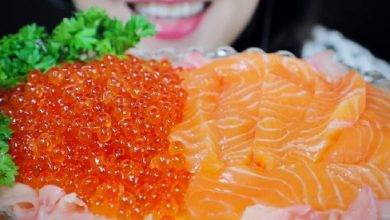Essential Information About the Frozen Fresh Fish

Frozen fish is fish that has to get frozen. Typically, it is frozen shortly after being caught, preserving its freshness. For people who do not have access to fresh fish or who wish to store fish for the future, frozen fish is a fantastic alternative. Frozen fish has more varieties, including salmon, tuna, cod, tilapia, etc. Many people have incorrect ideas about frozen seafood. Some believe it is not as delicious as fresh fish. But the fact is that frozen fish can sometimes be even healthier than fresh fish, if not better. You can use frozen fish in many meals. And it tastes great too. You may learn everything you need to know about frozen fish!
Waste gets decreased
Less waste is another benefit of purchasing frozen fish. The packaging contains very little air, so all the moisture is retained, unlike fresh fish which can dry out and lose its flavour if stored for too long. Having bigger, frozen fillets allows you to thaw and utilise as much as you need at any moment, resulting in less overall waste if you only consume tiny pieces of fish. Frozen seafood also tends to be cheaper than fresh seafood, and this can be a big incentive to buy in bulk if your freezer has enough space to store it all!
Pan directly from the freezer
If it is not practical to defrost the fish, you may put a partially thawed block of salmon right into a baking dish or skillet. Before cutting the frozen fillet into smaller pieces and placing it in an ovenproof dish with butter and veggies, let it defrost on the kitchen counter for 15 minutes. Fish soup can also be made with fish that has partially thawed. Keep in mind that a frozen fillet may lose some water when cooking.
Time- and convenience-saving
The convenience of frozen fish comes from the lack of defrosting requirements. It means you can pop it into the microwave or frying pan without waiting for it to thaw out in advance. It also makes cooking easier because there would not be any sticky residue left over on your hands after handling raw meat. Frozen seafood also lasts longer than fresh seafood, so if you do not plan on eating it within 24 hours of freezing. Go through this link https://ishavet.nu/ to know their delivery services by fish truck. Having a selection of frozen foods in stock means that there will always be something for anyone who drops by, whether for an impromptu dinner party or just an unexpected guest popping in during lunchtime.
Stir fry in hot water
Nothing could be simpler. The frozen fillets are put in the saucepan with the boiling water. Bring the water to the boil again, and allow the fish to simmer until the flesh flakes about 10 minutes. The size and thickness of the fillet will determine how long it will simmer. In the event that the fish is unsalted, salt the water.
Frozen fish is more environment friendly
Transporting fish requires a lot of carbon emissions. It takes work to carry fresh raw seafood in a timely and safe manner, generally by air. On the other hand, frozen seafood does not require the same urgency. Frozen fish products can get delivered by land or sea. This variation in transportation has a significant difference in its environmental impact and carbon footprint. Fresh fish is transported by air at a CO2 emission of 500 grams per metric tonne per km, while frozen seafood is transported by sea at a CO2 emission of just 40 grams per km.
Your companion here is the smell test
Skip the fish if it has a strong or ammoniated scent. Many experts advise you to stay away from fish that have a fishy smell, but the truth is that every species has a distinct aroma. If the fish stinks strongly, though, you should avoid it. Delicious entire fish becomes a chic meal’s centrepiece. If you get a full one, confirm the eyes are shiny and transparent. You can recognize old fish from a mile away because they have milky or foggy eyes.
Fresh fish is more nutritious and of higher quality
One of the finest natural methods for keeping fish at its freshest without sacrificing taste or quality is freezing. Scallops and groundfish fillets from Blue Harvest are individually quick frozen (IQF) in contemporary spiral freezers, which quickly cool them to -10°F. Our IQF procedure, in contrast to conventional freezing, reduces the production of ice crystals, which would otherwise make your fish dry and chewy when cooked.
Conclusion
Preservatives are not necessary because freezing is a natural process. Fish and seafood are always of the highest quality when they are frozen. Using frozen fish and seafood allows you to use as much or as little as you want and reduces waste. Using frozen fish and seafood can be up to 25% cheaper than fresh.




